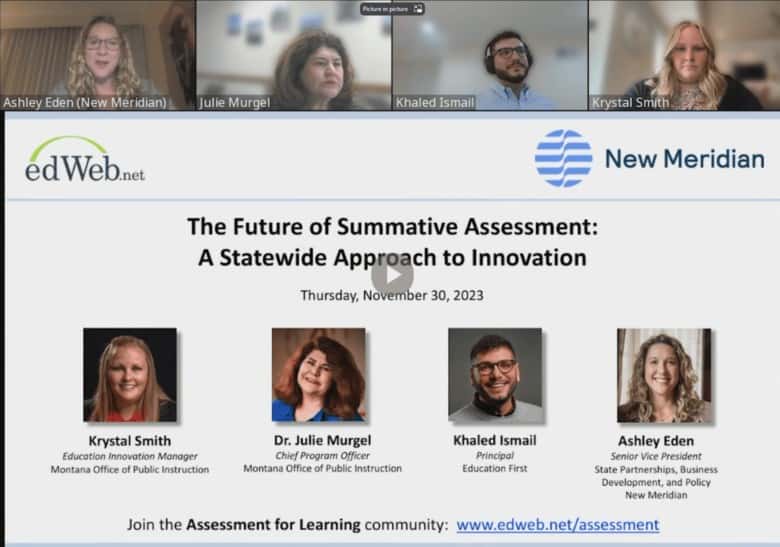Education experts from all over the country convened in New Hampshire in late September to discuss how states and school districts can make better use of interim assessments.
While most states conduct an annual summative assessment, and many school districts use classroom assessments to help inform instruction, interim assessments may help provide a bridge between these two practices. When state and local education agencies collaborate on interim assessments, the result can be better, more comprehensive feedback to educators.
In many states, students take summative tests at the end of the year and the results are often not available until the start of the next year, too late to make meaningful adjustments. “The cycle by which state assessments can inform instruction and school decisions is slow and limited,” according to the State of Assessment report produced this summer by Bellwether Education Partners.
Interim assessments may help change that—if they are designed as part of a portfolio of measures purposefully designed to give states and districts the information they need to improve teaching and learning.
The workshop, part of the 2019 Reidy Interactive Lecture Series hosted by the National Center for the Improvement of Educational Assessment, more commonly called the Center for Assessment, focused on helping states and districts make better decisions on the role of interim assessments. Speakers included assessment experts and developers; officials from state education departments and school districts; and educators with experience selecting and implementing interim assessments.
The participants worked to refine a tool created by the Center for Assessment to guide states and districts through a process to evaluate interim assessments and identify those that best meet their needs.
“Interim assessment must be evaluated with a clear understanding of the purposes for including the assessment and how the results will be used,” said Scott Marion, executive director of the Center. “This year’s conference focused on interim assessment to help state and district officials improve the way they select and use interim assessments to improve the education they provide for their students.”
Kristopher John, Vice President of Product Strategy at New Meridian, who was at the conference, said interim assessment is unlikely to replace annual state testing in the near future but that it will play an increasingly vital role in state assessment regimes.
“Interim assessment is an important tool and this conference highlighted exactly the type of work we need to do to develop the right interim measures,” he said.
The tool created by the Center for Assessment contains a three-phase process designed to guide those who are evaluating interim assessments toward solid decisions. The first phase identifies assessment gaps and needs. It asks states and districts to specify a vision for teaching and learning; evaluate how current tools align with that vision; and identify gaps in the information needed for students and educators to improve each year.
The second phase is designed to identify characteristics of an interim assessment that will fill in the gaps. To do so, it poses a series of questions about what information must be supplied for the interim assessment to play its role; what design features are necessary, such as test length and item format; what type of score comparisons are required; how and when the test should be administered; what information should be reported; and other important factors.
The third phase addresses evaluation and it is forthcoming. The work done at the conference helped refine the tool, which will eventually be distributed widely.
Tracy Gardner, a psychometrician and Chief Assessment Officer at New Meridian, who also attended the conference, said it focused on issues that are vital to the future of assessment.
“No one test can meet all needs,” she said. “But a comprehensive portfolio of assessments that contain multiple measures can create a highly accurate profile of student learning. It can identify strengths and weaknesses and point out areas that require more focus. Interim assessment will increasingly be part of that portfolio. That’s why this work is so important.”


